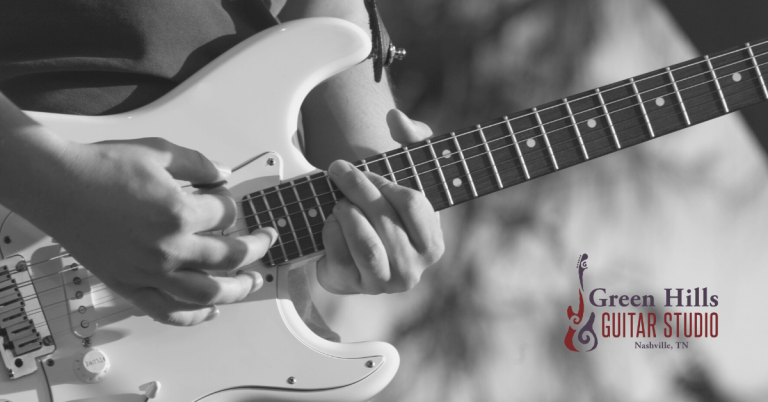Tips for Playing in a Band: A Guide for Guitarists
As a guitarist, playing in a band is an exhilarating experience that brings together creativity, collaboration, and musical growth. In this guide, we’ll delve into essential tips and strategies to help you navigate how to play guitar in a band setting successfully.
Over the years, I’ve had the opportunity to play in many bands as a guitarist for both my music and for others. I’ve performed in concert halls, theaters, clubs, bars, living rooms, garages, Best Buys, and VFWs; you name it, I’ve played it. Although there are many places and incarnations for playing guitar in a band, the rules never change, and my preparation is always the same.
Whether you’re a seasoned guitarist or just starting your musical adventure, these valuable insights will empower you to shine on stage, harmonize with fellow musicians, and create unforgettable performances that captivate audiences. Let’s dive in and unlock the secrets to becoming indispensable in any band setting.
Understanding Your Role on the Gig
As a guitarist stepping into a new gig, preparation is paramount to a successful performance. Whether you’ll be handling rhythm, lead guitar, or a combination of both, clarifying expectations from the outset is essential.
Is the band acoustic or electric guitar-based? What level of faithfulness to the original recordings is desired?
Once you have a clear picture of what lies ahead, it’s time to gear up for the occasion. Ensuring you have the right equipment is crucial for delivering a stellar performance. Take inventory of what gear will best suit the demands of the gig.
Try to get a set list in advance to chart the tunes so you can practice the music before rehearsals. Being well-prepared enables you to add your flair while staying true to the band’s vision, creating a captivating musical experience for fellow band members and the audience.
Things to Consider When Rehearsing
When meeting your bandmates for the first time, tuning up, and diving into the music, there are several vital aspects to consider for seamless rehearsals. During the initial run-through, observe your fellow musicians, assess your guitar tone, and identify any necessary adjustments.
As a lead guitarist, complement the singer or melody instrument without overpowering them. On the rhythm side, prioritize hearing the bass and drums clearly for tight cohesion.
Navigating potential challenges may be straightforward or require a more nuanced approach. If there’s a musical director present, they can help guide the process. In the absence of one, confidently take the reins and make decisions that serve the music and the artist’s vision.
Remember, rehearsals are not only about honing your skills but also about enhancing the collective sound of the band. Embrace open communication, actively listen to others’ contributions, and collaborate to create an exciting musical experience.
Things to Consider When Playing with a Band
Playing in a band is a constant learning curve. Everyone has unique experiences and abilities, which can be one of the most exhilarating things you experience. I like to leave a lot of space in the music at first. Then, as I get more comfortable with the material, I start filling in more and more.
Chances are, if you’re getting paid gigs to play guitar for someone, you’re ready for this, and you should proceed confidently. I promise, the more you reveal about yourself and your playing, any good musician should be able to pick up on that and will help you emphasize those things.
1. Understanding the band’s genre and sound
Before immersing yourself in the band, it’s vital to grasp the essence of the genre and the specific sound the band aims to create. Listen attentively to the band’s previous works and performances, dissecting their musical nuances and identifying recurring themes. Understanding the stylistic elements and key characteristics will empower you to tailor your guitar playing to blend with the band’s identity.
2. Crafting guitar parts that complement other instruments
In a band, each instrument contributes its unique voice to the collective melody. As a guitarist, your role involves complementing and enhancing the musical landscape rather than dominating it. Collaborate with other band members to identify spaces in the music where your guitar parts can add depth and texture. Pay close attention to the dynamics of the composition, finding moments to accentuate or subdue your playing, ensuring a cohesive and balanced sound.
3. Adding creative flair without overpowering the band
While adding your creative touch is essential, striking the right balance is vital. Aim to elevate the music without overshadowing other instruments. Thoughtful use of guitar techniques, such as tasteful solos or well-timed fills, can boost the band’s performance. Keep in mind that restraint can be just as impactful as technical virtuosity. Serving the song’s emotional journey should always remain the guiding principle.
By understanding the band’s genre, blending seamlessly with other instruments, and tastefully adding your creative touch, you’ll establish your unique playing style within the band context. This fusion of talents will create a powerful musical synergy, captivating audiences and leaving a lasting impression on stage.
The Role of Communication in a Band
Effective communication within a band is the cornerstone of a powerful musical journey. By actively listening, providing constructive feedback, addressing conflicts with empathy, and fostering a positive band culture, you can cultivate an environment where creativity flourishes, bonds strengthen, and the magic of music thrives.
Listening and providing constructive feedback
Effective communication is at the core of a successful band dynamic. Actively listen to your fellow band members, valuing their input and musical ideas. Offer constructive feedback with kindness and respect, nurturing an environment where everyone’s contributions are acknowledged and appreciated. You can collaboratively shape the music into something extraordinary by being receptive to one another.
Addressing conflicts and maintaining harmony
No band is immune to conflicts, but how they are addressed determines their resilience. Tackle issues promptly and professionally, seeking resolutions that prioritize the collective vision. Emphasize compromise and understanding, ensuring everyone feels heard and valued. Open communication channels build trust and foster an environment where conflicts can be overcome harmoniously.
Building a positive and supportive band culture
Cultivate a band culture that celebrates individual strengths and encourages growth. Create opportunities for constructive discussions, rehearsals, and jam sessions that inspire creativity and camaraderie. Nurture a sense of unity and support, allowing each member to thrive while contributing to the band’s success.
The Coda
Mastering the art of playing guitar in a band is a rewarding journey filled with growth and camaraderie. We’ve explored essential tips that encompass understanding your role, choosing the right gear, collaborating seamlessly, and effective rehearsal techniques. Embrace your unique playing style while harmonizing with fellow musicians, and let your creative flair shine.
At Green Hills Guitar Studio, we’re passionate about nurturing aspiring guitarists like you. Whether you’re interested in taking guitar lessons in Nashville or seeking online lessons, our experienced instructors are dedicated to guiding you on this musical adventure.
Unlock your potential, pursue your passion, and experience the joy of sharing music with others.
Contact Green Hills Guitar Studio today and embark on a transformative guitar journey. Let’s make music together!






